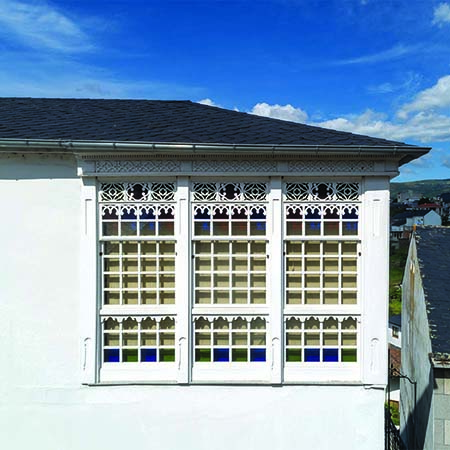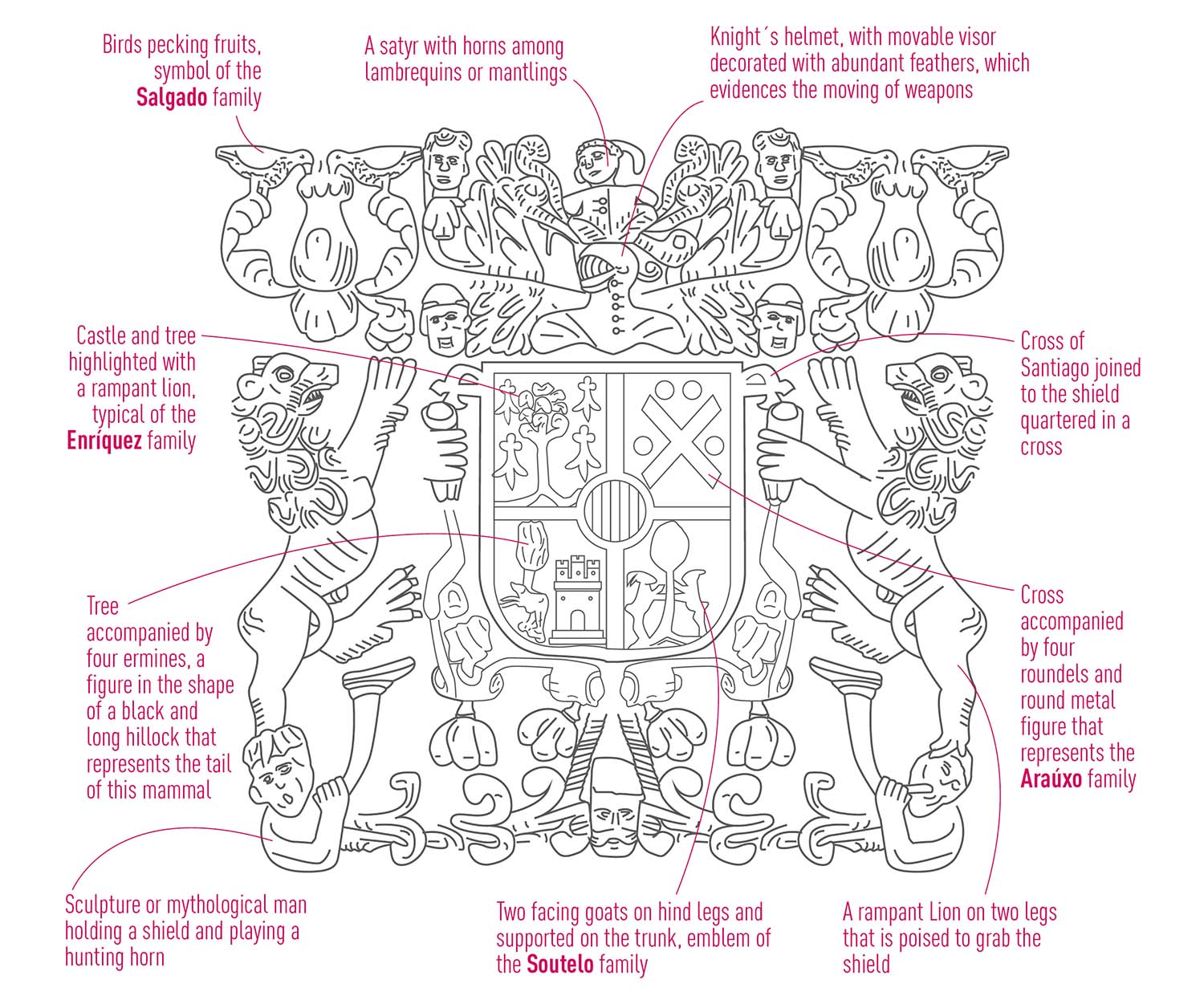
Located in Santo Cristo Street, the house was donated by a noble family to the Catholic Church. It was built in 1881 in an exempt manner and with a facade leading to one of the main streets of the town during the Middle and Modern Ages, which shows the high resources of its constructors. It has more than 200 m2 per floor, three floors, a gabled roof and a generous south-facing wooden gazebo -of magnificent carpentry- that fills the house with natural light. Under it there is a large overhanging balcony and, in the corner, a wide chamfer designed to facilitate the transit of carriages and cars.
Its main façade is organized in vertical strips, with windows protected by shutters on the ground floor and embrasures with wooden carpentry on the residential floor. Shelves plastered with lime hide the stonework of inferior quality, which contrasts with the stonework of good style that highlights the frames of the doors and windows.
"Their houses, of numerous rooms, floor with annexed chapel, hold in their interior rich and abundant furniture. Again we find beds made with canopies and damask pendants, desks, chairs covered in leather... luxury and ostentation throughout (...) Talavera tableware, silverware, metal candelabra and walls adorned with religious paintings (...) None of them have large farms (...) or too many heads of cattle, or of course, rents. In the best of cases, their standard of living is closer to that of a rich peasant than anything else. "
Gabriel Quiroga Barro
"Evolution of the agrarian structure in inner Galicia: A terra de Viana do Bolo, 1600-1820 ".
(1988)
